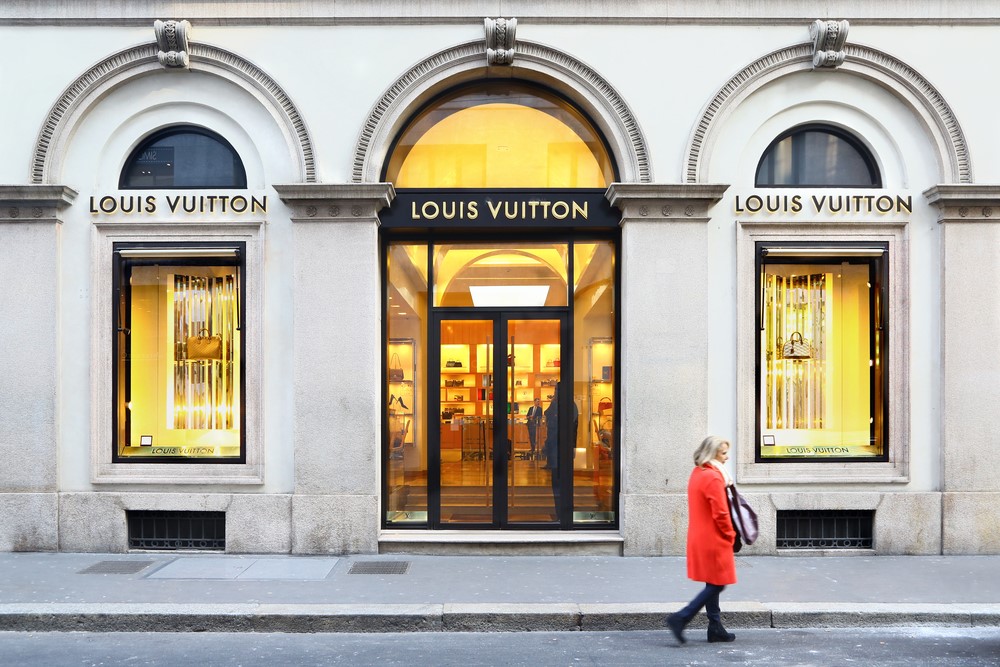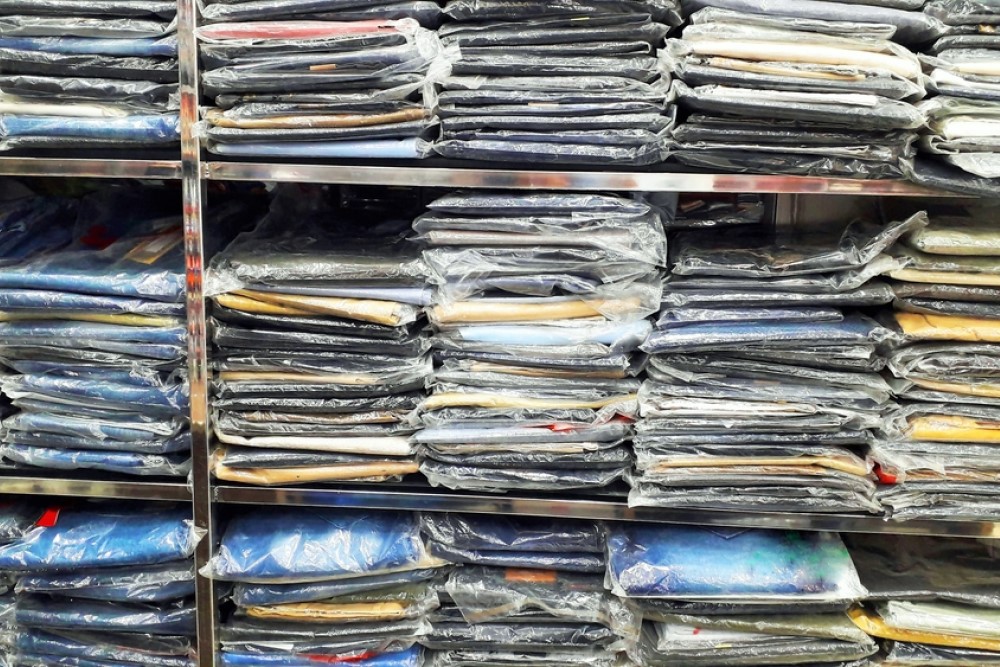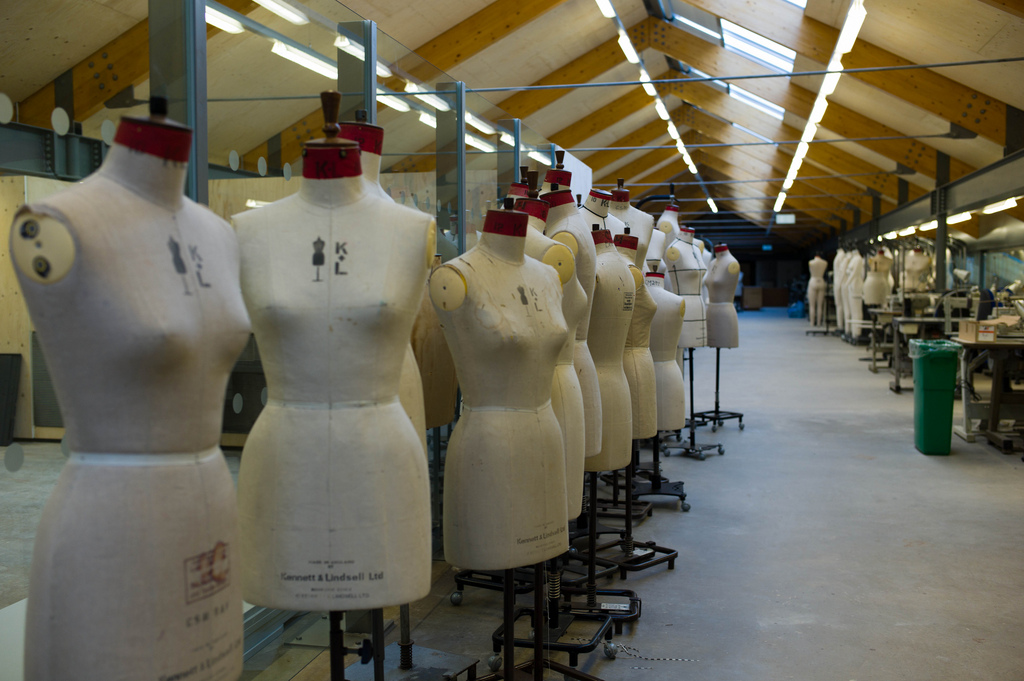While the designer for Louis Vuitton was probably hoping their iconic looks would be stealing the fashion hearts of the internet, it was not the powerhouse brand’s upcoming line that was posted all over the news. During the finale of one of the biggest fashion events in the world, Paris Fashion Week, while models for Louis Vuitton were in the midst of the runway, an environmental activist, Marie Cohuet, joined the models holding a sign stating “OVERCONSUMPTION = EXTINCTION.” Outside, more environmental activists from three different organizations were staging their own protest against the fashion industry’s harmful impact on the environment. Louis Vuitton was targeted specifically for its influence in the fashion industry, as well as for the brand’s recent pledge to reduce their environmental impact. The environmental group behind this protest claims Louis Vuitton is not living up to its promises — having committed to have 100% renewable energy in their production and logistics sites, and LED lighting in their stores by 2025. Are these commitments enough, however, to make a consequential impact on an environment that is becoming increasingly uninhabitable every year?
For one thing, Louis Vuitton is basing these objectives off the 2015 Paris Climate Agreement that settled on keeping global warming temperatures below 1.5- 2 degrees Celsius. This range of temperature indicates the difference between surviving the inclement weather we are currently dealing with and experiencing massive climate disasters that lead to unheard of burdens on countries and people. These two worlds look very different, especially depending on the geography of where one lives. Even at 1.5 degrees Celsius, many island nations will cease to exist, as this agreement was largely made based on the concerns of economic powerhouses, such as the U.S., that need not worry about their entire populations being swallowed by rising sea levels- just coast lines. Beyond just ignoring the potential extinction of smaller island nations, the goals of the Paris Climate Agreement are almost definitely unreachable at this point. The few goals Louis Vuitton has set for the brand’s environmental impact are not set to be reached until 2025, which is far beyond what the climate needs in reality from the industry. But, Louis Vuitton is only one brand of many in the industry, so what is the total impact of the entire fashion industry on the environment? And why should the fashion industry be at the forefront of industries limiting their environmental impacts?
Making clothes, is in fact, an extremely resource-intensive process, which consumes mass amounts of water, releases dangerous levels of carbon emissions, and depends on a wasteful consumerist business model. Every year, the fashion industry uses up such a massive amount of water that it could meet the needs of five million people. This is in a world that currently 2.2 billion people do not have safe access to clean drinking water. Furthermore, the industry depends largely upon synthetic materials, which put microplastics into the oceans, reeking negative impacts on an already vulnerable marine ecosystem. In terms of carbon emissions, the industry is responsible for ten percent of global emissions, which may rise by 50% by 2030, if it stays at the same pace. Fast fashion, a quickly growing pocket of the fashion industry, relies on a consumerist model in which one posts an outfit on social media, but then must buy a different outfit for their next post. Their clothes, therefore, are cheaply made and cheaply bought, and eventually end up in a landfill. Many of these clothes end up in an incinerator, which releases large amounts of poisonous gases and toxins into the air. Despite these statistics, the consumption of clothing is expected to rise from 62 metric tons in 2019 to 102 million tons in the next decade. These are environmental impacts that undoubtedly affect human’s health, however, there is a more direct connection to the endangerment of human life and the fashion industry.
Part of the reason fast fashion is able to sell its clothes at such a cheap price is because they do not pay the people in warehouses making the clothes a livable wage. This has essentially led to modern-day slavery practices in the production of the fashion world. Women make up the majority of the 40 million people worldwide that are enslaved in modern slavery networks and the fashion industry, from the workers in the warehouses to the collection of the raw materials, contributes to this network. The complicated supply chains that the fashion industry depends on make it difficult to track where the raw materials have come from and make it easier to hide the connection between a cute top on an Instagram model and an enslaved woman, or even child, in a dangerous factory. These factories and warehouses are often in countries that already struggle economically and therefore have populations of people vulnerable to the cheap wages and dangerous working conditions due to the risk of poverty. This present-day situation can undoubtedly be traced back to the roots of colonialism and the imperialist missions of the “Global North” against countries in the “Global South.” At the root of the fashion industry’s ethical issues lie not only environmental problems, but also complex race and gender issues. After all, the impacts on the climate will be felt first by the most vulnerable populations in the most vulnerable countries, both geographically and economically.
In order to address the mounting problems facing the fashion industry, some brands have turned towards more sustainable methods of making, packaging, and transporting clothes. For example, technology has allowed for companies to use recyclable fibers, which lack the toxins found in other sources. This also requires far less water than it would using the usual cotton material. Oftentimes, however, these sustainable brands can be extremely expensive, carrying a price tag of $550 for a simple white cotton t-shirt. This is simply unattainable for most of the population. One brand, CHNGE has managed to create a brand whose ideology is centered around sustainability, ethical practices, and activism. Their clothing is 100% carbon neutral as they protect hundreds of thousands of trees, they use an organic cotton that saves 500 gallons of water, and use recycled packaging for their clothes that can then be recycled again. They also own the factory that produces their clothing and guarantee fair and safe working conditions for their employees. They manage to do all of this while keeping the price of their shirts around $30.
Whereas brands like CHNGE seem to be taking active and important steps towards offsetting the impacts of their clothing production, it seems other brands like Louis Vuitton are failing to recognize the precarious place the world finds itself in. While individual fashion brands, and ideally the fashion world as a whole, can pledge and promise to decrease their environmental impacts, the impending climate doom does not rest solely upon the shoulders of fashion CEOs. Surely, they have a great responsibility given the impact of the fashion world, but our continued survival is largely dependent upon world leaders to make and enforce the real and necessary changes needed to prepare for the future. While the 2015 Paris Climate Agreement may have been historical in the global community’s acceptance of the need for change towards the climate, that agreement is failing. World leaders, from both poles of the globe, need to work together in a way that the world has never seen before in order to prepare for the worst that climate change is sure to bring.





